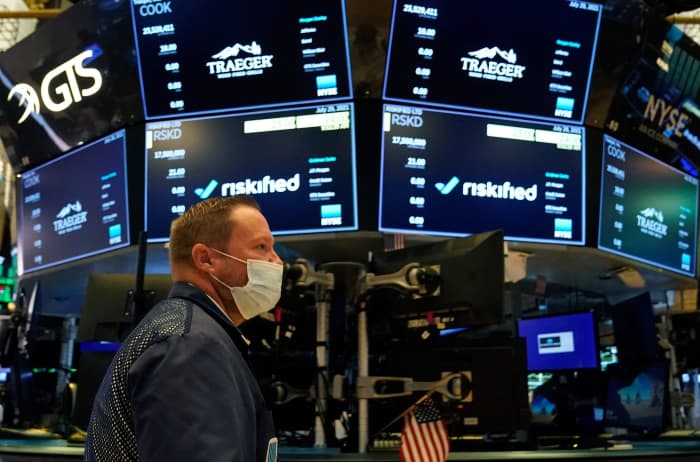Published: Aug. 30, 2021 at 2:32 p.m. ET
By
Vivien Lou Chen
Call it ‘Jackson Hold’: After Jackson Hole speech, investors expect an easy-money Fed to be status quo for weeks or months to come

By
Vivien Lou Chen
Call it ‘Jackson Hold’: After Jackson Hole speech, investors expect an easy-money Fed to be status quo for weeks or months to come

A trader works on the floor at the New York Stock Exchange in New York, on July 29, 2021. TIMOTHY A. CLARY/AGENCE FRANCE-PRESSE/GETTY IMAGES
Fed Chairman Jerome Powell’s ambiguity around the start date of any tapering in bond purchases this year is giving investors plenty of confidence that continued easy-monetary policy will be in place for at least weeks, if not months.
Friday’s Jackson Hole speech by Powell — colloquially referred to as “Jackson Hold” — is what’s established the current investing tone: It’s why money continued to flow Monday into Treasurys and U.S. stocks, with the S&P 500 SPX, -0.13% and Nasdaq Composite COMP, -0.04% indexes touching fresh intraday record highs, some analysts said.
While Powell remained unclear about just when a 2021 tapering process would unfold, investors made their own assumptions: A September announcement is riding largely on Friday’s nonfarm-payroll report, where the median expectation is for a gain of 750,000. Although a jobs number below expectations would almost certainly take a September announcement off the table, some market participants say that a figure matching or even exceeding estimates might also not be enough to tee-up the tapering process by the Fed’s next meeting in three weeks. That would leave the November gathering as the central bank’s next best opportunity.
“’Jackson Hold’ speaks to the markets’ mindset right now, which is risk on and rates on,” meaning bond prices rally and yields fall, said Rob Daly, director of fixed-income at Glenmede Investment Management, who oversees $4.5 billion. “The uncertainty leading to a more dovish tone from Powell is being seen as an elixir, or what investors want.”
An overabundance of liquidity in financial markets at the moment is moving asset prices in the same direction. And the opposite is at risk of occurring when the Fed starts to signal its tapering process is under way, with both stocks and bonds selling off. Daly says he “likes being in cash because taking chips off the table is prudent, given we could see greater market volatility in the fall.”
Advertisement
Until recently, bond prices and stocks ordinarily moved in opposite directions. That is because in past periods of risk-on in markets, investors tended to head into stocks and out of bonds, which are seen as a haven. The Fed’s $120 billion of monthly bond buying ensures that a player remains in government debt, propping up prices and anchoring yields. That, along with continued foreign demand, a lack of positive-yielding bonds world-wide and month-end rebalancing considerations, has investors continuing to buy U.S. government debt as stock values also rise.
Case in point: The 10-year rate TMUBMUSD10Y, 1.307% has continued to pull back since Powell’s remarks, though it still had the biggest weekly rise since June last week.
“Whether you agree with the Fed’s easy policies around asset purchases (which we don’t at this point) or not, the Chairman has a remarkable ability to soothe markets,” said Gregory Faranello, executive director of AmeriVet Securities and head of U.S. rates trading and strategy. “Since Friday, we have seen this reflected in rates, equities, credit and broader financial conditions.” Meanwhile, the forward Fed Funds curve is implying a low-rate environment “for quite some time and right now markets like it.”
Given the lack of specifics on a tapering timeline, investors zeroed in on Powell’s efforts to distinguish the scaling back of bond purchases from the first rate increase. That distinction helped to solidify in many minds that a hike won’t necessarily immediately follow the end of tapering.
“Both stocks and bonds are experiencing a relief rally after Fed Chair Powell separated taper timing from rate-liftoff timing,” said David Gagnon, a San Diego-based managing director and head of Treasurys trading for Academy Securities. “Basically, more liquidity is buoying asset prices, and with month-end rebalancing approaching, buyers in the bond market are in the driver’s seat at the moment.”
No comments:
Post a Comment